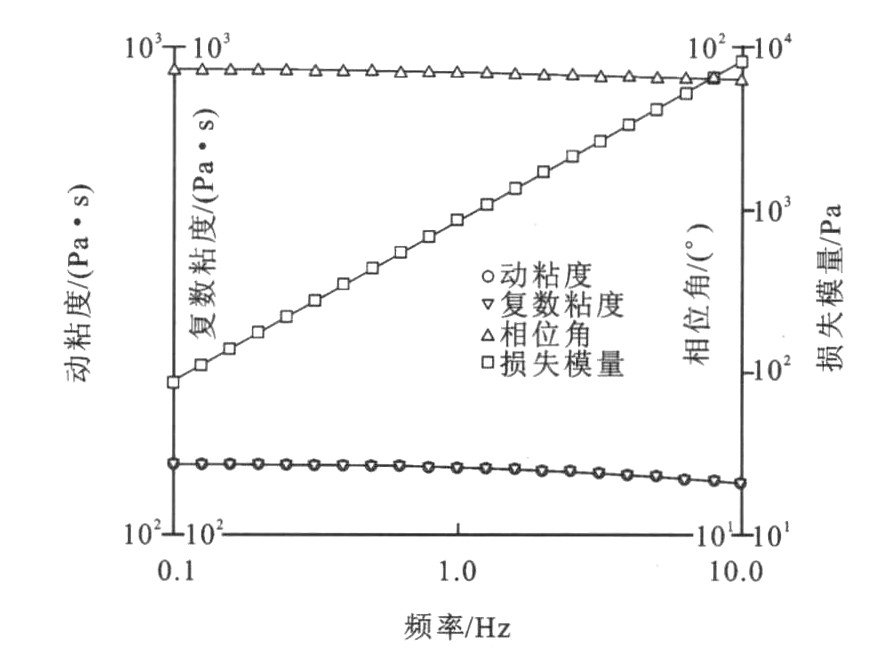Research on zero shear viscosity of asphalt based on different loading modes
Article Text (Baidu Translation)
-
摘要: 为了得到合理的评价沥青高温性能的指标, 通过对不同沥青的动载和静载试验, 分析了零剪切粘度(ZSV)在不同加载方式下的变异, 研究了该指标对于评价沥青高温性能的适用性和可行性, 评价了不同流变模型对高温性能拟合参数的影响。分析结果表明: 通过动态频率扫描的图形外延可以直接得到基质沥青的ZSV值, 改性沥青在低剪切速率下无法进入粘性流动状态, 不能通过试验的图形外延直接得到零剪切粘度; 采用静态加载拟合得到的ZSV值均小于动态加载的ZSV值, 但通过Carreau模型对动载试验结果进行拟合与通过离散延迟谱对长时间静载蠕变试验结果进行拟合的ZSV值相关性最好, 可以共同作为沥青路用性能的高温评价指标。Abstract: In order to obtain rational indexes for appraising the high-temperature performance of asphalt, dynamic loading test and static loading test of asphalt were made, the difference of zero shear viscosity(ZSV) was analyzed under different loading modes, the applicability and feasibility of ZSV were studied, the influence of different rheological models on the fitting parameters of asphalt at high temperature was evaluated.Analysis result shows that the ZSV value of base asphalt can be got by extrapolating the figure scanned by dynamic frequency, while modified asphalt can't enter into viscosity flow state at low shear rate, so its ZSV can't be got directly by extrapolating the figure.ZSV values fitted from static loading are smaller than that from dynamic loading, while the values fitted from dynamic loading based on Carreau model and from long-time static loading based on discrete retardation spectrum have a good correlation, and both of them can be used together as high-temperature indexes of asphalt.
-
Key words:
- pavement engineering /
- high-temperature index /
- modified asphalt /
- rheological model /
- dynamic loading /
- static loading
-
表 1 长时间蠕变恢复试验拟合的ZSV
Table 1. Fitting ZSV from long-time creep-recovery test
沥青 蠕变-恢复时间/h 蠕变阶段η0/(Pa·s) 恢复阶段η0/(Pa·s) 离散延迟谱η0/(Pa·s) 埃索改性 5-5 6.35×104 6.10×104 7.32×104 15-15 7.76×104 7.67×104 8.98×104 高模量 5-5 3.49×105 3.04×105 4.43×105 15-15 4.52×105 4.17×105 5.06×105 -
[1] KHATTAK MJ, BALADI G. Engineering properties of polymer-modified asphalt mixtures[C]//TRB. Transportation Research Record 1638. Washington DC: TRB, 1998: 12-22. [2] MACCARRONE S, HOLLERAN G, GNANASEELAN G P. Properties of polymer modified binders andrelation ship to mix and pavement performance[J]. AAPT, 1995, 76: 167-188. [3] BAZANT Z F. Size effect[J]. International Journal of Solids and Structures, 2000, 37(1): 69-80. [4] 袁迎捷, 张争奇, 胡长顺 . Superpave沥青规范对改性沥青的适用性[J]. 长安大学学报: 自然科学版, 2004, 24(1): 9-11. doi: 10.3321/j.issn:1671-8879.2004.01.003YUAN Ying-jie, ZHANG Zheng-qi,Hu Chang-shun . Applicability of Superpave specification to modified asphalt[J]. Journal of Chang an University: Nature Science Edition, 2004, 24(1): 9-11. (in Chinese) doi: 10.3321/j.issn:1671-8879.2004.01.003[5] SHENOY A. Refinement of the Superpave specification parameter for performance grading of asphalt[J]. Journal of Transportation Engineering, 2001, 127(5): 357-362. doi: 10.1061/(ASCE)0733-947X(2001)127:5(357) [6] SYBILSKI D. Zero-shear viscosity of bituminous binder andits relation to bituminous mixtures rutting resistance[C]//TRB. Transportation Research Record 1535. WashingtonDC: TRB, 1996: 15-21. [7] ABBAS A, MASAD E, PAPAGI ANNAKIS T, et al. Modelling asphalt mastic stiffness using discrete element analysis and micromechanics-based models[J]. International Journal of Pavement Engineering, 2005, 6(2): 137-146. doi: 10.1080/10298430500159040 [8] DONGRE R, D ANGELO J. Evaluation of different parame-ters for superpave high temperature binder specification basedon rutting performance in the accelerated loading facility at FHWA[C]//TRB. Transportation Research Record 1829. Washington DC: TRB, 2004: 455-487. -





 下载:
下载:








